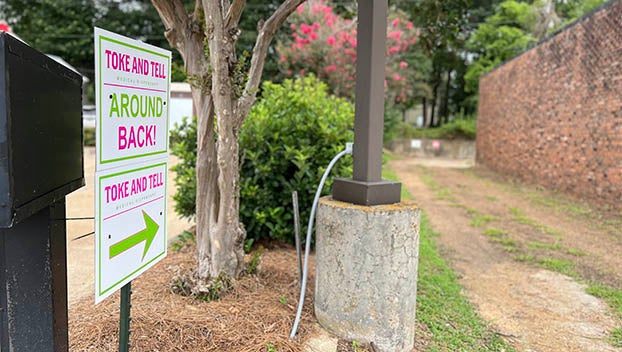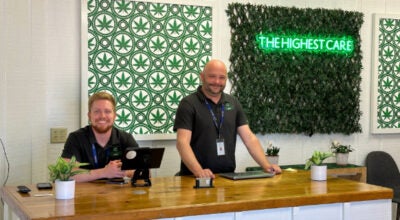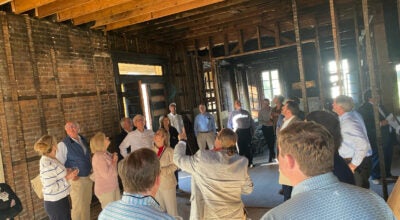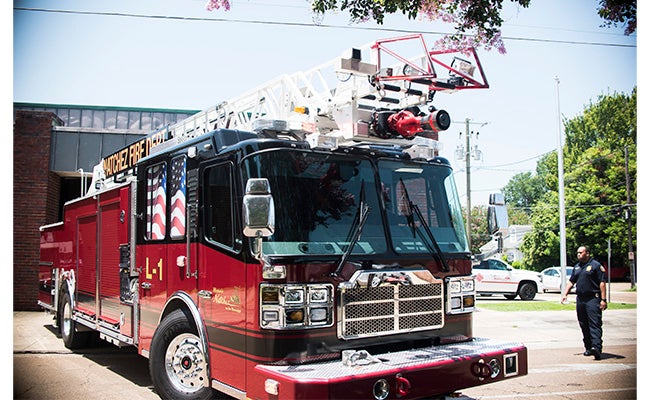Healing points: Fairbanks offering acupuncture
Published 12:10 am Sunday, November 8, 2015

Dr. Russ Fairbanks shows examples of what type of needles are used for his acupuncture pain management therapy. Fairbanks was recently certified in acupuncture after completing a course with Harvard Medical School’s Department of Continuing Education. (Tim Givens/The Natchez Democrat)
NATCHEZ — When Dr. Russ Fairbanks pulls a needle out of his pocket these days, there’s a good chance it’s not the hollow kind that will be attached to a syringe.
Instead, he might just stick it in a patient and leave it there for a while.
Fairbanks, an orthopedic specialist who practices at Riverpark Medical Center in Vidalia, was recently certified in acupuncture as a pain management technique through the Harvard Medical School’s continuing education department.
The certification process required nine months of study and five trips to Boston for on-the-ground training, resulting in 300 hours of continuing education for the doctor.
“Acupuncture is the most practiced form of medicine in the world, and it’s performed all over the continental U.S., except in the Deep South,” Fairbanks said.
“Acupuncture is the use of fine needles you can hardly feel that are placed in different areas of your body and redirect the healing energy — known as ‘qi’ — to the areas of the body that won’t heal.”
While that sounds mystical, modern science is starting to better understand how the process, which has been practiced in some parts of the world for 10,000 years, actually works, he said.
“If you have an MRI of the brain of someone getting acupuncture, when you put those needles in, (the needle) makes certain cortical areas of the brain increase their activities,” Fairbanks said. “We are starting to get a real physiological understanding of how it works.”

Dr. Russ Fairbanks stands beside his acupuncture pain management certification, earned through Harvard Medical School’s continuing education program. (Tim Givens/The Natchez Democrat
While medicine has changed — anti-inflammatory medicines for pain management are losing support because they can cause stomach ulcers and what was popular 25 years ago are now considered “junk medicine” — the basic idea behind acupuncture has remained constant, Fairbanks said.
“The basic texts are 1,000 years old,” he said. “This practice is 10,000 years old, and people are still using it.”
Where the needles are placed “has a lot to do with their symptomology and where they have tenderness,” he said, for example, placing needles in the hand might treat back pain.
Between five and 10 needles, which are 0.2 millimeters in width, are used and are typically left in place for 30 to 45 minutes.
Fairbanks said he first became interested in the practice — which he at one time thought was “a bunch of hooey” — after seeing a presentation at a pain management conference about how the U.S. Army uses it on the battlefield.
“I looked into it, and I thought that if the U.S. Army uses it, and Harvard — the world’s leading medical school — teaches it, this isn’t just a bunch of chicanery,” he said.
After the presentation about the Army practice, Fairbanks had been given several of the needles. He tried them on a couple of curious patients, and the response, he said, was overwhelming.
“I have had people weep on me from relief,” he said. “I’ve done one person, and then their spouse came in and said, ‘I want you to do to me what you did.’”
Fairbanks said acupuncture isn’t for everybody — 30 percent of patients don’t respond to it — and he won’t be mixing it with his pain management patients who are taking medicine.
“They say you want to contact patients who don’t tend to respond very well to medicine,” Fairbanks said.
“So I think of it as a complement to traditional western medicine rather than a replacement. If I can help a few patients along the way with the needles, then I will have done my job and served the Lord and his Father by helping those people.”
Fairbanks said he will continue his work as an orthopedic specialist and surgeon in addition to the acupuncture and pain management practice.





